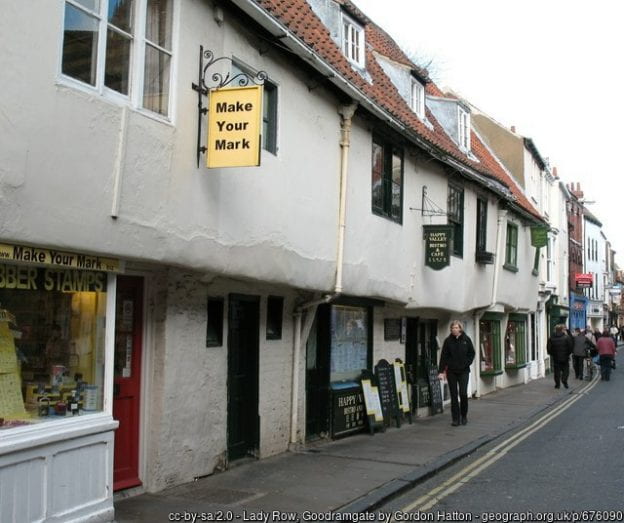(A version of this was posted on the Bristol Law School Blog on 24th May 2021. I will continue to update this version, including adding to the ‘grand total’ mentioned in the sixth paragraph below, as I find new instances).
One of the less enthusiastic endorsements of marriage is to be found in the words of St Paul’s first letter to the Corinthians: ‘it is better to marry than to burn’. His point was that celibacy was the best way to live, but those too weak to resist the temptations of the flesh could take the second best option of monogamous marriage. Before the Protestant Reformation in England, there were those who followed what this passage portrayed as the higher path, dedicating themselves to a life of celibacy and the service of God in monasteries and convents, but for most people, the expectation was marriage. Marriage and fire were, however, not as distant, one from the other, as St Paul’s words would imply.
Marriage in medieval England was understood to be hierarchical, with the husband expected to control and correct the wife, and the wife to obey the husband. He was (again in words attributed to St Paul), ‘the head of the wife’. No doubt, as a great deal of historical research over the past few decades has shown, there were many variations in practice, with more and less amicable situations, more and less mutual respect. Even so, the husband’s authority over the wife was a fundamental principle, with real consequences; and one of these was connected with fire.
We can see an example of this connection between marriage and fire in an entry on a medieval legal record from the late fourteenth century. This notes a case from Essex, dealt with by John Cavendish and others, sent to the county as royal justices, in 1378. An indicting jury of twelve men had said that, when John Trilly junior was lying in bed one Saturday night, his wife, Margaret, and a certain John Robat of Walden, killed him with an axe or hatchet. The suspects were arrested, brought to court, pleaded not guilty, and accepted jury trial. Unfortunately for them, the trial jury said that they were both guilty, as well as noting that, at the time of the killing, Margaret was John Trilly’s wife. It was ordered that John Robat should be hanged. Margaret, however, was to be burned.
From at least the first half of the fourteenth century, and probably from the thirteenth century, the accepted punishment for a wife who killed her husband was death by burning. This was an unusual mode of execution: most convicted felons (including husbands convicted of killing their wives) faced the rope rather than the fire. For those of us for whom capital punishment of any sort is entirely abhorrent, it may be difficult to feel particularly exercised about the use of one method of ending a life rather than another, so long ago. (We may, though. note the reference, in a document relating to the execution of Anne Boleyn, of the move from burning to decapitation as a matter of royal mercy, as some sort of indication that there was seen to be a difference, at least in the sixteenth century), and it is certainly the case that, for a legal historian, it is important to try to look into the flames, and see what can be learned from past law, past practice.
Why burn husband-killers? Three overlapping factors were relevant: sex/gender, marital status and nature of the offence. This was not, in fact, the only type of offence in which a woman might be burned while a man would face a different penalty. The same applied to counterfeiting offences, and to killings of one’s employer, and there are occasional, earlier, examples of women being burned for other felonies. The use of burning for husband-killers is, however, clearly connected with a wish to make a particular example of those who transgressed against the hierarchical understanding of marriage. For a wife to kill her husband was not simply homicide, but a form of rebellion against her natural superior. It was mentioned in the Statute of Treasons 1352, and from the fifteenth century onwards, it came to be called ‘petty treason’.
The burning of husband-killers has tended to be minimised in classical accounts of legal history, and is sometimes assumed to be associated with the Statute of Treasons. My research in this area has, however, highlighted both the longer, deeper association of husband-killing and fire, and also the greater number of examples of women consigned to the flames for this offence than had previously been suggested. While they were never numerous, there were certainly enough of them to confirm in the minds of lawyers and the population more generally, that this was the expected outcome, in the event of a conviction for husband-slaying. I have discussed the matter in a chapter of my recent book on women and common law in medieval England, and continue to collect examples of women sentenced to death by burning, from the vast corpus of medieval legal records which remain to us. The current total on my ‘spreadsheet of doom’, compiled from work on records of late medieval criminal sessions (13th-15th Cs, the majority being from the late 14th C and early 15th C), stands at 65 burnings ordered for women convicted of husband-killing. While it is not possible to elicit comprehensive, reliable, statistics from such searches, it may be of interest to note that this is considerably higher than the number of executions for rape which I have seen in the same records, though considerably lower than the number of executions for theft, for example. It is certainly high enough to be worthy of attention.
The idea that the offence was particularly heinous and should be punished in this spectacular and symbolic way was not something which was being imposed on communities by ‘the powers that be’: it was something much more pervasive. In some contrast to other areas of crime, in which jurors were willing to bend facts to let defendants avoid punishment, trial jurors, and those men in local communities in a position to initiate prosecutions by indictment or presentment, seem to have been keen to ensure that husband-killers would be burned. On occasion, we see them making it clear that a woman charged with homicide was married to the deceased at the time he was killed, though this might be obscured by the fact that she was now married to somebody else. This was done so that conviction would lead to burning, not hanging. There seems to have been no doubt in the minds of the leading men in medieval communities that it was right to mark out husband-killers in this way.
The fact that the penalty was used, and accepted as appropriate by men at different social levels, over a long period of time, would seem to make it likely to have exerted an influence on the minds and behaviour of married women. This is particularly so, if we add in other things which I have noted emerging from my archival work: accusations were sometimes made on what looks like a relatively slender basis, with rather quick leaps to an accusation that a woman whose husband was killed by somebody else was ‘in on it’, and even over-zealous prosecution when the husband was not, in fact dead at all. These findings do tend to suggest that the threat of fire as a judicial penalty, as well as an eternal punishment, is something which should receive further consideration in studies of medieval marriage and gender, as well as law.
As well as telling other people what they ought to think is worthy of investigation, a post on a research blog is a good place to include a little reflection on the process of conducting research. I began looking at this area as a result of being unconvinced by the accounts I had read in secondary sources, and suspicious that they were over-simplifying matters, in a way which played down the importance of the executions of women by burning. To understand what more there was to say, and how accounts might need to be adjusted, it has been necessary to trawl through a very large number of pages of medieval manuscript (in recent times, this has been via the magnificent Anglo American Legal Tradition collection of scanned images), looking for accusations of husband-killing, and orders that somebody should be burnt. Finding a needle amongst the fields of haystacks does sometimes feel like a bit of a ‘win’, each instance strengthening the emerging argument. Nevertheles, each time I come across one of the Latin abbreviations indicating that a burning has been ordered, in the margin of a roll, there is the realisation that it indicates a terrifying end to a real person, as human as the rest of us. I have come to recognise that that feeling, that discomfort, that connection, is itself important in an investigation of the people whose lives and deaths are noted in the rolls.
Here endeth the lesson.
GS
1st May, 2021.
(Photo by Zachary Kadolph on Unsplash)









